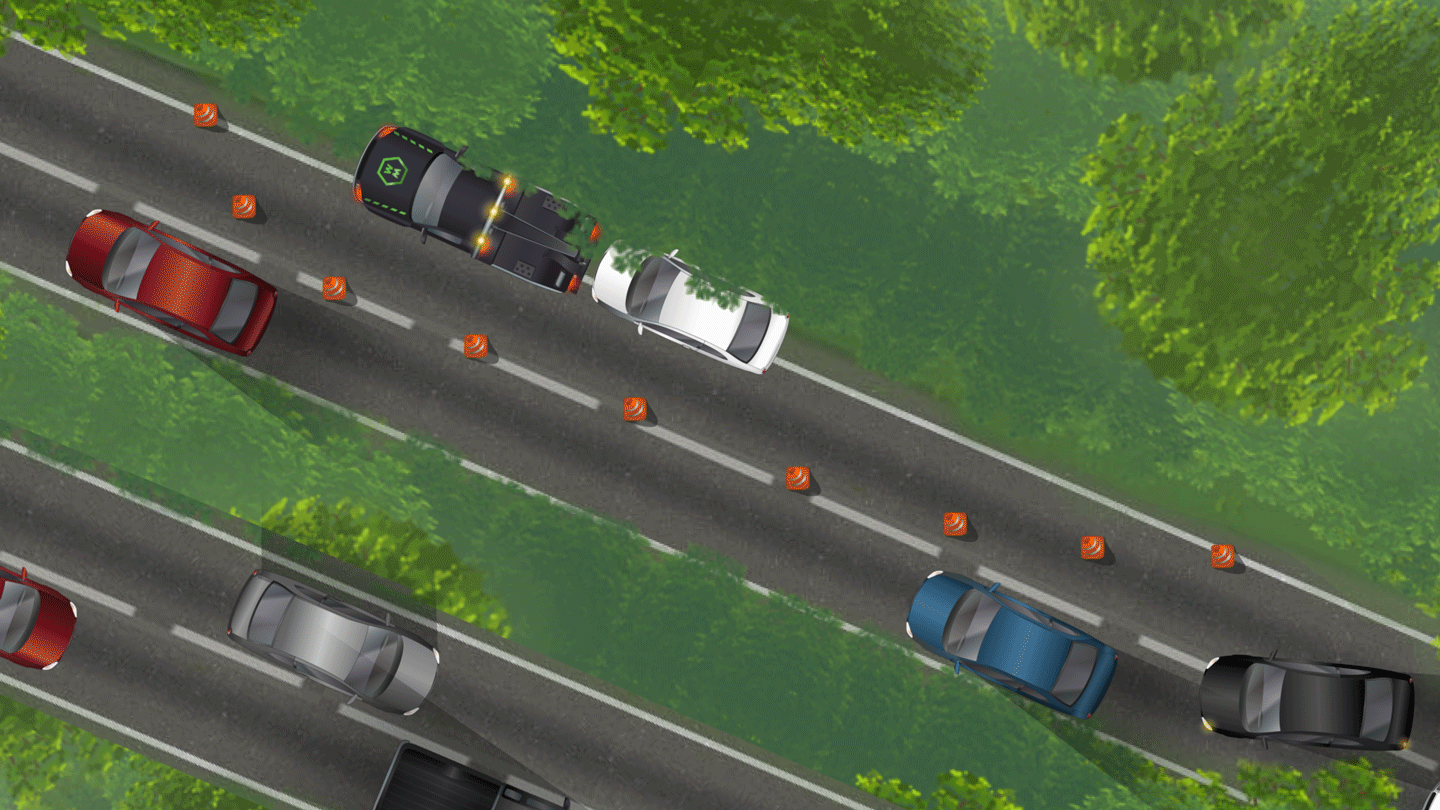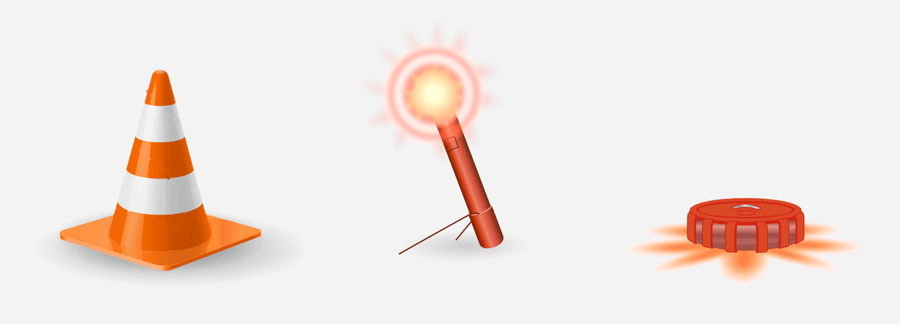THE IMPORTANCE OF TRAFFIC MANAGEMENT

Operator safety is not just limited to the equipment worn or operations and techniques conducted while on scene. In addition to arming one self with the safest equipment and most logical and advanced recovery techniques available, every operator should know the most efficient way to manage an incident and the potential dangers while on scene.
The most efficient way to be aware of your surroundings is to help control your surroundings. This will automatically increase operator safety and reduce distractions that can interfere with completing a recovery as quickly as possible.
TRAFFIC MANAGEMENT EQUIPMENT

Unlike service vehicles and traffic management specific vehicles, the typical wrecker or carrier vehicle does not have the storage space available to carry both high quantity and various styles of traffic management devices. Most light-duty trucks will be limited to a few traffic cones or pylons and emergency lighting on the roof of the cab. While basic, these items are all you’ll need to set up your work area.
WHEN DO YOU NEED TRAFFIC MANAGEMENT?
Additional traffic management should be called in anytime the recovery is impacted by any of the following factors:
- Size and Duration of Recovery
- the customer’s vehicle crosses into lanes of traffic or towing equipment
- the recovery will take additional time do to unforseen conditions
- Road Conditions
- conditions such as a slippery road surface from ice or rain is preventing you from safely conducting the recovery
- gravel, dirt or debris is interfering with the tow
- Weather Conditions & Visibility
- snow, rain, fog or is creating dangerous working conditions due to low visibility and risk of slips and falls
- Traffic Volume and Speed
- the volume of traffic is preventing you from operating safely
- the speed limit on the road exceeds 30 mph / 50 kph
If any of these factors can impact you safely towing or removing a vehicle, WreckMaster strongly suggests bringing in traffic management or Law enforcement.
INTRODUCING YOURSELF
The first step when arriving on scene is introducing yourself to customers and / or first responders at the incident. Or Law enforcement While technically any first responder on scene is responsible for the safety of the customer, the operator should be considerate and ensure they are protected at all times. Be sure to answer any questions that the customer may ask and to explain the process after surveying the scene and determining what is required to tow their vehicle.
SETTING UP YOUR WORK AREA

When arriving, survey the scene to determine if it is safe to conduct the tow without any additional traffic management devices or vehicles. Whenever working roadside, be sure to have your truck’s hazard lights flashing, as well as your emergency lighting on at al times. WreckMaster recommends turning on the customer vehicle’s four-way hazard lights as well, whenever possible. This is important to alert incoming traffic of work ahead, particularly in low visibility and bad weather. Exit the vehicle, making note of both the speed and volume of traffic. Move to the non-traffic side of the vehicles before beginning the recovery.
The typical light-duty wrecker carries between four and six pylons or traffic control cones. A minimum of three cones are required to establish a safe work area when working roadside. These should be placed behind either your truck or the customers vehicle, depending on which vehicle is downstream. The first cone should be placed as close to the fog line as possible without entering a lane of traffic. The cones should then be placed every 10 paces (roughly one metre) apart on an angle between the fog line and the gravel on the side of the road. On residential or city streets with a sidewalk, pylons or cones must still be deployed using the same spacing to create a safe work space. If you’re carrying any additional signage that can alert incoming traffic road work ahead, be sure to display it.
Once your work area has been established, it is safe to begin conducting the tow.
UNDERSTANDING AND PREVENTING RISK

Setting up a traffic control area is essential in keeping an operator safe, however it is important to note that hazards and risk still exist while working on a roadway. Constantly being aware of your surroundings both in and outside of the work zone will help keep you safe from motor vehicles or towing equipment. Risk is also not limited to operators; be sure to alert first responders, drivers and anyone else on seen of any potential dangers.
Having signage that encourages drivers to reduce speed and giving motorists an appropriate amount of advanced warning will greatly reduce risk while working on a roadway. Whenever possible, WreckMaster recommends bringing a spare vehicle with emergency lighting or signage to lead off the traffic control zone.
